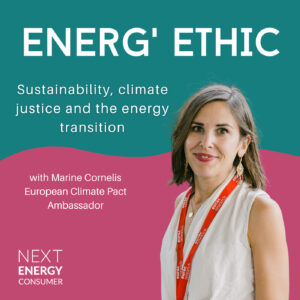📢 How is Energy Poverty Progressing in Italy? Unveiling the Key Takeaways from the OIPE Report 2023
📊 The Evolution of Energy Poverty in Italy:
According to the latest OIPE report, a staggering 2.2 million households (8.5% of the total) were plagued by energy poverty in 2021, showing a 0.5% increase. This distressing rise can be attributed to surging prices and adverse climate factors. While the South experiences a higher prevalence than the North, echoing larger trends, the issue exhibits significant spatial heterogeneity within regions. Most alarmingly, this crisis affects a shocking 950,000 minors (10%) across 583,000 energy-poor households, with a particularly distressing impact on foreign families, witnessing a 2.5 times higher incidence.
💶 Exploring Instruments like the Energy Bonus:
Efforts to alleviate energy poverty have been made through the Energy Bonus scheme, aiming to lighten the financial burden. Direct bill subsidies have been introduced, resulting in a notable reduction of energy expenses. On average, households benefit from a 30% decrease in gross electricity costs and a 15% decrease in net gas costs. The amount of the bonus is tailored to individual circumstances, considering energy prices and household characteristics. Additionally, for gas usage, it also accounts for the climate zone. Since 2021, families seeking to activate the social bonus are required to obtain an ISEE certification, certifying an income below specified thresholds. These thresholds are set at €12,000 in 2022 and €15,000 in 2023.
However, it is worth highlighting that the “Superbonus,” a widely discussed flagship instrument that offers a remarkable 110% tax credit for qualifying seismic renovations and energy efficiency improvements, is described as having a fundamentally regressive impact, that renders it unsuitable for combating energy poverty. For more information about poorly targeted energy efficiency measures, check the report How to Avoid a Renoviction Wave? (December 2022).
🛑 The Impact of Changes to “Reddito di Cittadinanza”:
An important factor to consider when addressing energy poverty is the recent changes to the “Reddito di Cittadinanza,” also known as the minimum integration income. These changes are anticipated to have a direct impact on the energy poverty landscape, further emphasizing the need for comprehensive measures.
⚖ Striving for Energy Justice & Empowering Communities:
The OIPE report sheds light on the crucial aspect of energy justice and the potential of energy communities to combat energy poverty. The report features an insightful piece co-authored by the exceptional Dr. Aurore Dudka and myself, underscoring the significance of energy communities, particularly cooperatives, in addressing this pressing issue. It is disheartening, however, to note the limited involvement of energy-poor individuals in existing communities, as it is not currently prioritized in legislation and guidelines. To achieve tangible progress, a shared definition and metric of the social benefits associated with energy communities in vulnerable contexts are urgently needed.
👩🚒 Addressing Skills Gaps for Sustainable Impact:
To effectively overcome energy poverty and create lasting change for marginalized populations, enhancing the capabilities and resources of the third sector at the local level is paramount. Recognizing this need, the efforts of organisations like Rete Assist, an initiative dedicated to fortifying the skills and efficacy of the third sector in tackling energy poverty, should be promoted.
In Conclusion:
While the battle against energy poverty in Italy remains arduous, recent years have witnessed significant strides in the framework and engagement of multiple parties, transcending the confines of the current government. This upward trajectory sparks optimism for the future, fueling hope for a more just and energy-secure Italy. Together, we can overcome energy poverty and ensure a brighter future for all! 💪🏼🔌



